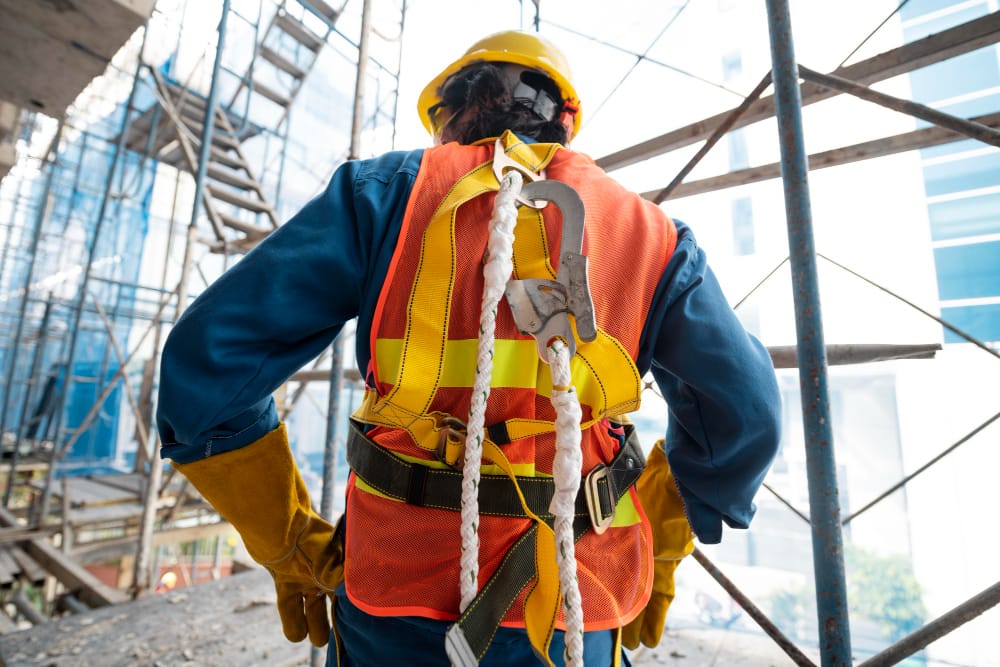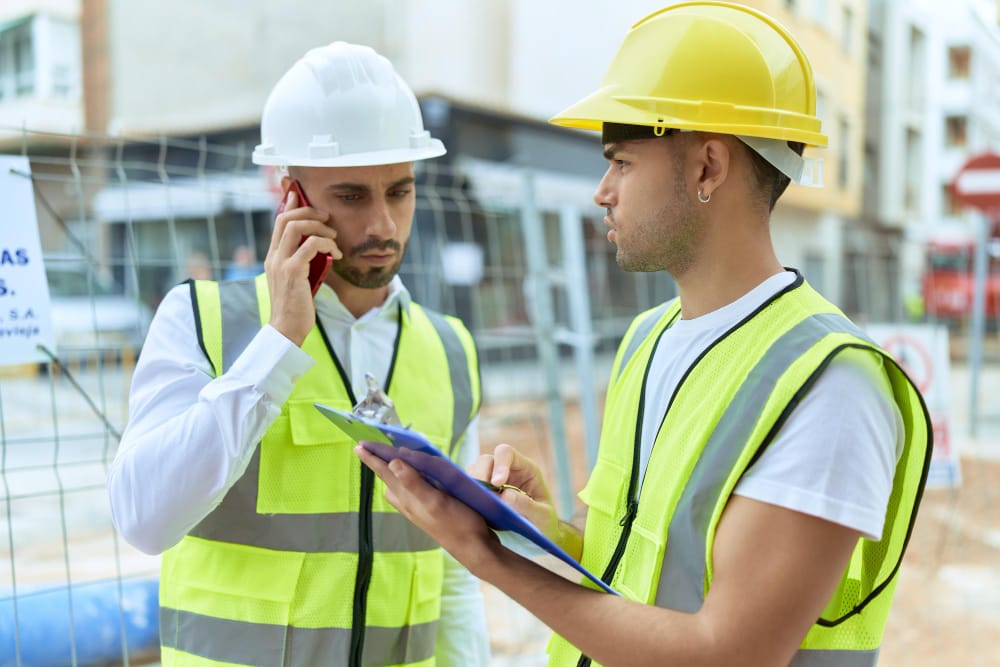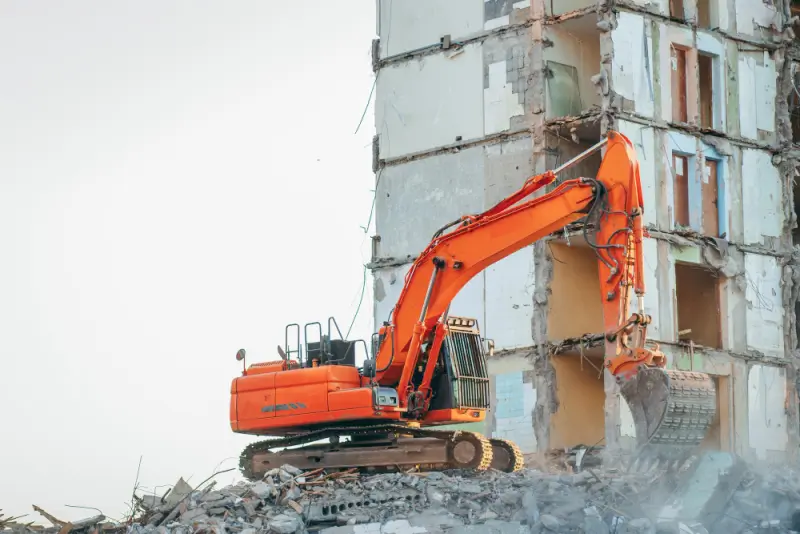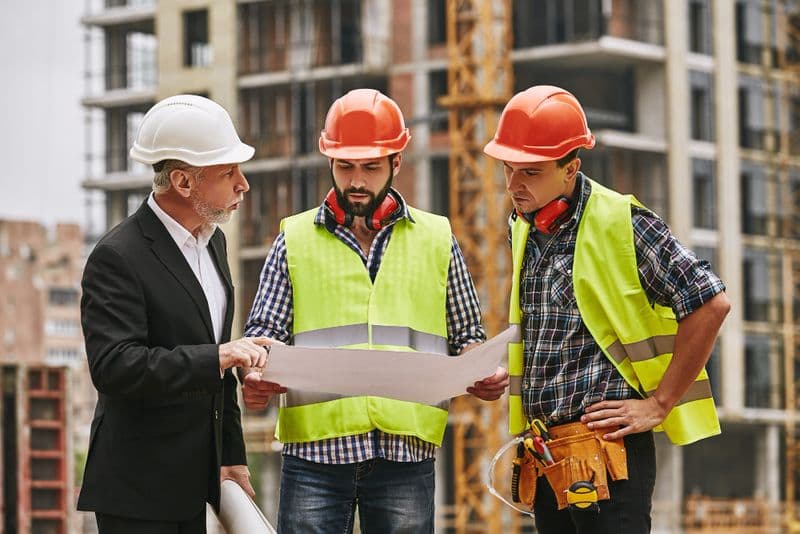Construction jobsites are inherently dangerous environments where one mistake can cost lives. With over 5,190 workplace fatalities in 2021 and construction accounting for 22% of all occupational deaths, safety isn't optional—it's essential. This comprehensive guide helps construction managers build safer worksites, reduce OSHA violations, and protect their most valuable asset: their workforce.
The Critical State of Construction Safety Today
The construction industry faces unprecedented safety challenges. Falls remain the leading cause of construction fatalities, accounting for 36.5% of all deaths in the sector. Beyond the human cost, workplace injuries create massive financial burdens.
The National Safety Council estimates that each medically consulted injury costs employers an average of $42,000 when factoring in wage losses, medical expenses, and administrative costs. Over 70 million workdays were lost to injuries in 2021 alone.
Construction's Fatal Four Hazards:
- Falls (36.5% of construction deaths)
- Struck by objects (10.1% of deaths)
- Electrocution (8.3% of deaths)
- Caught-in/between incidents (7.3% of deaths)
These four categories account for 62.2% of all construction worker fatalities, yet they're largely preventable with proper planning and training.

OSHA's Role in Construction Safety
The Occupational Safety and Health Administration (OSHA) sets mandatory safety standards for construction sites under 29 CFR regulations. OSHA conducts compliance audits every three years, and violations can result in fines ranging from hundreds to hundreds of thousands of dollars.
Violation Type | Penalty Range | Common Examples |
|---|---|---|
Willful/Repeated | Up to $156,259 | Ignoring known fall hazards |
Serious | Up to $15,625 | Missing guardrails, improper PPE |
Other-than-Serious | Up to $15,625 | Incomplete safety documentation |
Failure to Abate | Up to $15,625 per day | Not correcting cited violations |
Building Comprehensive Safety Management Systems
Effective jobsite safety starts with systematic planning. Every construction project requires a site-specific safety plan that addresses unique hazards and establishes clear protocols for risk management.
Essential Safety Plan Components:
- Comprehensive hazard identification and risk assessment
- Site-specific emergency response procedures
- Worker training requirements and schedules
- Personal protective equipment specifications
- Daily safety briefing protocols
- Incident reporting and investigation procedures
Implementing Daily Safety Protocols
Start each workday with structured safety meetings. These 10-15 minute briefings set the tone for safe operations and provide opportunities to address emerging hazards.
Daily Safety Meeting Agenda:
- Weather conditions and their impact on work
- High-risk activities scheduled for the day
- Equipment inspections and safety checks
- Review of previous day's incidents or near misses
- Worker concerns and safety suggestions
Open communication creates trust and encourages workers to report hazards without fear of retaliation. When workers feel comfortable raising safety concerns, incident rates drop significantly.
Advanced Fall Protection Strategies
Falls consistently account for the greatest number of construction fatalities. OSHA requires fall protection for any work performed six feet or more above a lower level. However, industry best practices recommend protection at four feet or higher.
Primary Fall Protection Systems:
- Guardrail Systems: Top rails at 42 inches, mid-rails at 21 inches, toe boards at least 3.5 inches high
- Safety Net Systems: Positioned as close as practicable under walking/working surfaces, maximum 30 feet below
- Personal Fall Arrest Systems: Full-body harnesses connected to secure anchor points
Scaffolding Safety Excellence
Scaffolding-related accidents cause thousands of injuries annually. All workers involved in scaffold erection, dismantling, or use must receive comprehensive training from qualified instructors.
Critical Scaffolding Requirements:
- Competent person supervision during assembly and daily use
- Platform width minimum of 18 inches for most applications
- Guardrails required on all open sides and ends above 10 feet
- Access ladders properly secured and inspected daily
- Load capacity clearly marked and never exceeded
Electrical Safety and Hazard Prevention
Electrical hazards pose serious risks on construction sites. Ground Fault Circuit Interrupters (GFCIs) are mandatory for all temporary electrical installations. Workers must maintain minimum safe distances from overhead power lines based on voltage levels.
Power Line Safety Distances:
- Up to 50kV: Minimum 10 feet clearance
- Over 50kV: Minimum 10 feet plus 4 inches for every 10kV over 50kV
- Uncertain voltage: Assume highest voltage and maintain maximum clearance
Lockout/Tagout Procedures
Implement comprehensive energy control procedures for all electrical work. Only qualified electricians should perform electrical installations, and all circuits must be tested before work begins.
Optimizing Personal Protective Equipment Programs
PPE serves as the last line of defense against workplace hazards. Employers must provide all required protective equipment at no cost to workers and ensure proper fit for all team members.
Task-Specific PPE Requirements:
Work Activity | Head Protection | Eye/Face | Respiratory | Hand | Foot |
|---|---|---|---|---|---|
General Construction | Class G hard hat | Safety glasses Z87.1 | N/A | General work gloves | Steel toe boots |
Welding Operations | Class G hard hat | Welding helmet shade 10+ | N/A | Leather welding gloves | Leather boots |
Chemical Handling | Class G hard hat | Chemical splash goggles | Respirator if required | Chemical-resistant gloves | Chemical-resistant boots |
Electrical Work | Class E hard hat | Safety glasses Z87.1 | N/A | Insulated gloves rated for voltage | Electrical hazard boots |
Addressing PPE Fit and Comfort Issues
PPE effectiveness depends on proper fit. Traditional equipment designed for average male body types may not fit all workers properly. Employers should provide multiple size options and adjustable features to accommodate diverse workforces.
Emergency Response and Incident Management
Comprehensive emergency response planning saves lives when accidents occur. Every jobsite needs clearly defined procedures for medical emergencies, fires, severe weather, and hazardous material incidents.
Emergency Response Team Structure:
- Site Emergency Coordinator (typically the superintendent)
- Trained First Aid responders (minimum one per 25 workers)
- Evacuation Wardens (assigned to specific areas or crews)
- Communication Coordinator (maintains emergency contact systems)
First Aid and Medical Emergency Procedures
Ensure immediate access to first aid supplies and trained responders. Serious injuries require professional medical attention, but proper first aid can prevent complications and save lives while waiting for emergency services.
Required First Aid Supplies:
- Sterile gauze pads and bandages in multiple sizes
- Adhesive tape and bandages
- Antiseptic wipes and instant cold packs
- Scissors, tweezers, and disposable gloves
- Emergency contact information and incident report forms
Technology Solutions for Modern Safety Management
Digital tools revolutionize how construction teams manage safety programs. Mobile apps enable real-time incident reporting, while wearable devices can detect falls and automatically alert emergency responders.
Emerging Safety Technologies:
- Smart helmets with built-in sensors and communication systems
- Wearable devices that monitor worker fatigue and heat stress
- Drone technology for hazard identification and site surveys
- Artificial intelligence for predictive safety analytics

Workforce Management and Safety Verification
Finding qualified, safety-trained workers remains a significant challenge for construction companies. Traditional hiring processes make it difficult to verify certifications and training records quickly.
FlexCrew USA's advanced platform solves this problem with AI-powered matching technology that connects contractors with pre-screened, safety-certified professionals. Their comprehensive database tracks OSHA certifications, training completion dates, and safety performance history in real-time.
Digital Workforce Platform Benefits:
- Instant verification of worker safety credentials and certifications
- AI-powered matching based on specific project safety requirements
- Real-time tracking of training expiration dates and renewal needs
- Automated compliance reporting for OSHA documentation requirements
- Access to resume-building tools that highlight safety qualifications
This technology streamlines the hiring process while ensuring all workers meet project-specific safety standards before arriving on site.
Training Excellence and Competency Development
Effective safety training goes beyond basic OSHA requirements. Workers need comprehensive education that covers both regulatory compliance and practical hazard recognition skills.
Core Training Requirements:
- OSHA 10-hour Construction Safety for all workers
- OSHA 30-hour Construction Safety for supervisors
- Site-specific hazard awareness training
- Equipment-specific safety certification
- Emergency response and evacuation procedures
Specialized Competent Person Training
OSHA requires "competent persons" for many construction activities. These individuals must have the knowledge and authority to identify hazards and take corrective action.
Competent Person Requirements:
- Fall Protection: Authorized to design and supervise fall protection systems
- Scaffolding: Qualified to oversee scaffold erection and daily inspections
- Excavation: Trained to classify soil conditions and design protective systems
- Cranes: Certified to conduct pre-operational inspections and oversee rigging
Cost-Benefit Analysis of Safety Investments
Safety programs require upfront investment but generate substantial returns through reduced incidents, lower insurance premiums, and improved productivity. Companies with strong safety records often qualify for workers' compensation discounts and premium project opportunities.
Measurable Safety Benefits:
- Reduced workers' compensation claims and experience modification rates
- Lower OSHA fines and regulatory penalties
- Decreased project delays due to incidents
- Improved worker retention and morale
- Enhanced company reputation and competitive advantage
Insurance and Liability Considerations
Insurance companies increasingly offer premium discounts for companies with comprehensive safety programs. Experience Modification Rates (EMR) directly impact workers' compensation costs, making safety investment crucial for long-term profitability.
Quality Control and Continuous Improvement
Regular safety audits and inspections identify potential hazards before they cause incidents. Implement systematic review processes that engage workers in hazard identification and solution development.
Inspection Schedule Recommendations:
- Daily: Supervisor walkthroughs and equipment checks
- Weekly: Comprehensive safety audits by qualified personnel
- Monthly: Management safety reviews and trend analysis
- Quarterly: Third-party safety assessments and program updates
Performance Metrics and Tracking
Monitor key safety indicators to measure program effectiveness and identify improvement opportunities. Leading indicators predict future performance, while lagging indicators measure past results.
Essential Safety Metrics:
- Total Recordable Incident Rate (TRIR)
- Days Away, Restricted, or Transferred (DART) rate
- Near miss reporting frequency
- Training completion percentages
- Safety audit scores and corrective action closure rates
Frequently Asked Questions
Q: What are the most common OSHA violations on construction sites?
A: Fall protection, scaffolding, ladders, electrical systems, and eye/face protection violations top the list.
Q: How often should safety inspections be conducted?
A: Daily inspections are recommended, with weekly comprehensive reviews and monthly formal audits.
Q: Who is responsible for providing PPE?
A: Employers must provide all required PPE at no cost to workers and replace damaged equipment immediately.
Q: What training is required for new construction workers?
A: OSHA 10-hour construction safety, site-specific orientation, and task-specific training before starting work.
Q: How do I find qualified safety-trained workers?
A: Use FlexCrew USA's AI-powered matching platform to connect with pre-screened, safety-certified construction professionals who meet your project requirements.
Q: What should be included in an emergency action plan?
A: Evacuation procedures, emergency contacts, medical response protocols, fire prevention measures, and communication systems.
Q: How can technology improve jobsite safety?
A: Wearables with AI can predict dangerous locations and alert workers. FlexCrew USA's digital workforce platform also tracks worker certifications and safety training status.
Q: What are the consequences of OSHA violations?
A: Fines range from hundreds to hundreds of thousands of dollars, plus potential criminal charges for willful violations.
Q: How do I verify worker safety credentials quickly?
A: FlexCrew USA's platform provides instant verification of OSHA certifications, safety training records, and work history through our comprehensive database.
Q: What records must be maintained for safety compliance?
A: Training records, inspection logs, incident reports, equipment maintenance, and OSHA documentation for 3-5 years.
Construction safety requires unwavering commitment from leadership and active participation from every team member. Successful safety programs combine comprehensive planning, ongoing training, and continuous improvement with the latest technology solutions. By prioritizing worker protection and implementing systematic safety management approaches, construction companies protect their most valuable assets while building sustainable, profitable operations that stand the test of time.



